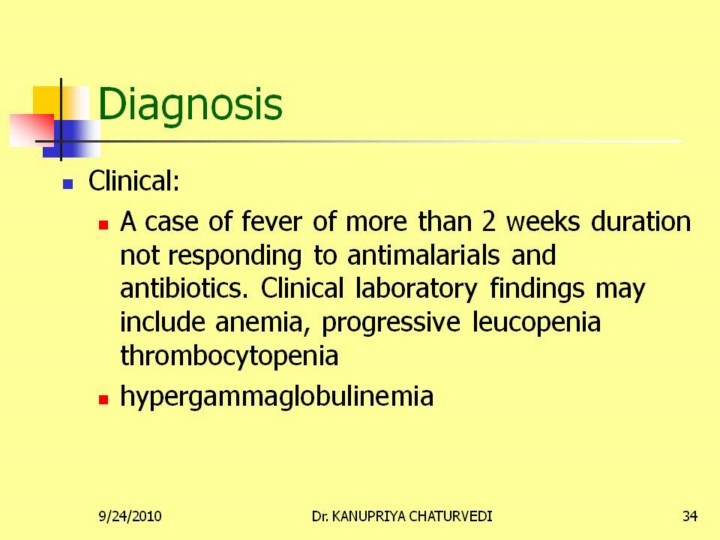| front |1 |2 |3 |4 |5 |6 |7 |8 |9 |10 |11 |12 |13 |14 |15 |16 |17 |18 |19 |20 |21 |22 |23 |24 |25 |26 |27 |28 |29 |30 |31 |32 |33 |34 |35 |36 |37 |38 |39 |40 |41 |42 |43 |44 |45 |46 |47 |48 |49 |50 |51 |52 |review |
 |
Serology tests: Variety of tests are available for diagnosis of Kala-azar. The most commonly used tests based on relative sensitivity; specificity and operationally feasibility include Direct Agglutination Test (DAT), rk39 dipstick and ELISA. However all these tests detect IgG antibodies that are relatively long lasting. Aldehyde Test is commonly used but it is a non-specific test. IgM detecting tests are under development and not available for field use. Parasite demonstration in bone marrow/spleen/lymphnode aspiration or in culture medium is the confirmatory diagnosis. However, sensitivity varies with the organ selected for aspiration. Though spleen aspiration has the highest sensitivity and specificity (considered gold standard) but a skilled professional with appropriate precaustions can perform it only at a good hospital facility.
|